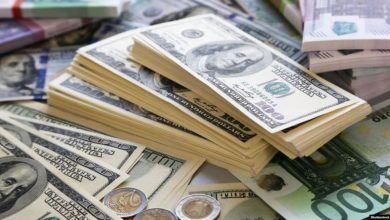Does Europe need an expensive euro
High European exchange rate ruined a number of European firms
A year and a half ago, many experts considered the level of 1.4 dollars per euro “critical” for European exports. In Europe, exports account for 20 – 40% of the total economy, although a significant part of it is export to other European countries. For comparison: in the US, exports account for only 11% of GDP. All other goods and services manufactured in the country are absorbed by the huge domestic market.
The current exchange rate is $ 1.54 per euro. And European exports have actually declined, although so far not as significantly as previously feared.
Of course, for some European firms, a certain “critical ceiling” of the euro has long been passed, and it has completely ruined them, says Gernot Nerb, director of the IFO research institute in Munich. But at the same time, many other companies have proved that they can quite survive the higher rate: “In general, there is no doubt that the dollar is quoted today much lower than its real value, while the euro exchange rate, on the contrary, is clearly overvalued. But you will have to live with this for some time. ”
Since its introduction in 1999, the European currency has appreciated by more than 30% against the dollar. And since October 2000, when its rate was minimal, and one euro was only 82 US cents, the growth was 84%. Only during 2007, the euro against the dollar rose by 16% and continues to grow.
Its further dynamics depends solely on the state of the American economy, said Francisco Martinez Alcalá, an expert with the Spanish Ministry of Finance. According to him, the free fall of the dollar is unlikely to last long – the real situation in the US economy is far from critical: “By the way, no one needs the“ expensive ”euro in Europe either. Let us recall, for example, the difficulties Airbus is currently experiencing with marketing its products. ”
ECB facing a dilemma
In Europe – the record inflation rate in recent years: 3.2% year on year, although the European Central Bank (ECB) considers the maximum allowable price increase of 2% per year.
Moreover, their even greater growth is largely restrained precisely due to the rising European currency: all imports to Europe are becoming cheaper – oil, first of all. In fact, the “expensive” euro carries out part of the functions of the European Central Bank, allowing it, even with high inflation, not to raise interest rates on loans. The higher they are, the more loans become more expensive, and this would further reduce the rate of economic growth.
The European Bank could, of course, curb inflation by raising interest rates. But then the difference between the rates in the USA and Europe (today – 3% and 4%, respectively) will only increase, the dollar, in turn, will be under even greater pressure than even now, and the euro will rise again, says an employee of the German Institute of World Economy in Berlin Christian Draeger. As a result, European exports to the United States will again suffer.
However, according to Christian Draeger, the factors that today mainly provide price increases in Europe are gradually losing their influence. “For example, we assume that automobile fuel prices will decline this year, simply because the growth rate of the entire global economy has slowed significantly. Rising food prices will continue for some time, but this trend is already running out. Apparently, in the second half of the year, inflation in Europe will still decline. ”
But until this happens, the ECB is increasingly demanding lower rates, as European economies have slowed sharply in recent months, and its forecasts for 2008 are constantly being reviewed for the worse. Although, if you start to cut rates, to curb the inevitable new wave of inflation, the euro against the dollar should be even higher.
The European Bank has indeed faced a dilemma, says Gernot Nerb, director of the IFO Munich. He believes that the ECB should have lowered interest rates for a long time: “An expensive euro partly restrains rising prices in Europe, and lowering rates would undoubtedly stimulate the European economy.”
Forecasts for the year
Many traders and analysts of the foreign exchange markets today predict that by the summer, the exchange rate of the European currency against the US dollar may drop to the level of 1.3-1.4 dollars per 1 euro.
In the medium term, the dollar will certainly go up – there is no doubt about that, agrees Francisco Martinez Alcalá, an expert at the Spanish Ministry of Finance. The American economy is very “resilient,” it has great potential for quickly recovering its potential. “And as soon as this process begins, the dollar will immediately rise in price. But this is unlikely to happen by the summer – I think it will take more time. “
In general, the current situation of the American economy is still more vulnerable than the European one. And the United States will need some more time to overcome the mortgage crisis and balance the state budget, adds Christian Draeger.
IFO Institute experts believe that thanks to export growth amid a “weak” dollar, the US economy will soon regain strength and the impact of the financial crisis will wane, says Institute Director Gernot Nerb: “I don’t exclude that by mid-summer the rate The euro against the dollar will become more realistic and stop between 1.35 and 1.4. It’s hard to say exactly when this will happen, but, in any case, in the second half of this year. ”
On March 6, the European Central Bank, once again over the past eight months, decided not to change the basic interest rates on loans for 15 countries of the Eurozone.
This post is also available in:
 English
English  Русский (Russian)
Русский (Russian)





